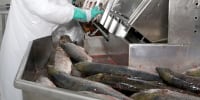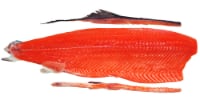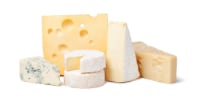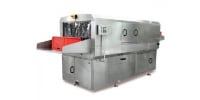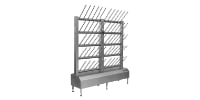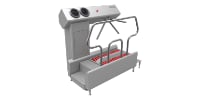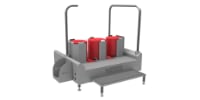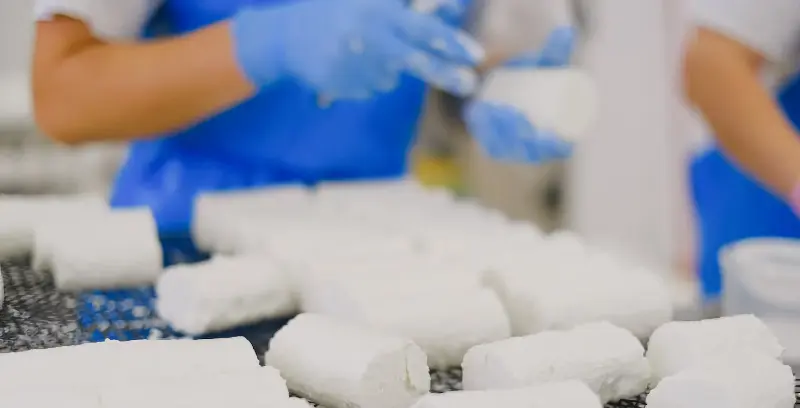
Latvian Food Industry 2023 Outlook and 2024 Forecast
As we delve into the Latvian food industry, a sector characterised by resilience and adaptability, we uncover the key factors that shaped its trajectory in 2023 and forecast the challenges and opportunities that lie ahead in 2024. This comprehensive analysis provides investors, policymakers, and industry stakeholders with valuable insights into the market dynamics, investment trends, and strategic shifts in this vital economic sector.
Market Dynamics
The year 2023 witnessed modest growth in Latvian food production, with a 0.3% increase compared to the previous year, signaling a steady annual growth rate of 2.6%. This upturn reflects the declining production costs over the past year, which are gradually benefiting the consumer market. Moreover, with an uptrend in wages, a positive shift in food purchasing power is anticipated towards the end of this year and into the next.
2024 Forecast: Navigating Uncertainties
The outlook for 2024, however, is tinged with uncertainties. Despite the food sector’s adaptation to the new normal, issues like labor taxes, availability, and sick leave policies present ongoing challenges. These factors will continue to exert pressure on the industry, shaping its trajectory in the coming year.
Investment Trends and Economic Landscape
In the realm of investments, food business managers are navigating a landscape marked by high credit costs and geopolitical instability. The decision between scaling back or amplifying investments to reach loftier goals is a delicate balancing act, playing a critical role in the sector’s sustainable growth.
2023 Industry Analysis
A deep dive into the food and technical sectors reveals a robust performance in 2023. The food sector, in particular, stands out as the manufacturing industry’s second-largest segment, registering a significant 6.1% year-on-year growth in November. This marks a remarkable turnaround from the consistent decline experienced since 2018.
Commodity Price Crisis: A Retrospective
The recent stabilisation in commodity prices comes as a silver lining following the tumultuous commodity price crisis. Although the crisis has subsided, its lingering effects on food production and pricing continue to be a subject of analysis and adaptation within the industry. Despite raw material fluctuations and ongoing geopolitical tensions, there’s a sense of cautious optimism as the industry moves beyond the peak of the crisis.
Taxation and Competitive Edge
In a regional context, the Latvian food industry faces a unique challenge – a higher tax burden compared to its Baltic counterparts, Lithuania and Estonia. This disparity in taxation plays a crucial role in shaping the competitive landscape, influencing the sector’s ability to compete on a broader European stage.
Labor Market Dynamics
The labor market presents a complex puzzle for the industry, with shortages leading to significant wage increases, an average of around 15% this year. This rise in labor costs, while essential for retaining a skilled workforce, has a cascading effect on food prices, compelling the industry to rethink its pricing strategies and operational models.
Export Market Insights
Latvia’s food industry is increasingly looking outward, with exports becoming a pivotal aspect of its growth strategy. However, penetrating new export markets remains a formidable challenge, with each market presenting unique tastes, requirements, and regulatory hurdles. The exploration of these new frontiers is crucial for the industry’s expansion and resilience.
Global Competition and Export Reorientation
In the wake of global upheavals, particularly the ongoing war, Latvian food producers are reorienting their export strategies. This shift is not only a response to geopolitical events but also a strategic move to tap into emerging opportunities in the global market. The competition is fierce, and success in this arena requires agility, innovation, and a deep understanding of global market dynamics.
Raw Material Supply Chain Analysis
The supply chain for raw materials, especially in the context of recent international events, is a critical factor for the Latvian food industry. The industry’s ability to adapt to changes in global grain export routes, particularly those affected by geopolitical tensions, will be vital in maintaining a steady supply and price stability.
Agricultural Production and Climate Change
Climate change and its impact on agricultural production are increasingly at the forefront of industry concerns. Events such as droughts, frosts, and hail have localized impacts but also reflect global climate trends that the industry must navigate. Adapting to these changes, whether through technology, crop diversification, or other means, is crucial for future sustainability.
Consumer Trends and Economic Impact
The purchasing power of Latvian consumers, affected by high food inflation, is a sensitive issue with direct implications for the food industry. As consumers adjust their spending, producers are compelled to adapt, focusing more on economic segments and promotional pricing strategies to align with changing consumer behaviours.
Investment Climate Amidst Financial Changes
The investment climate in the food industry is under pressure from fluctuating bank rates, impacting decisions across the sector. The need for careful strategic planning is paramount, especially for small and medium-sized enterprises, as they navigate these financial challenges and seek opportunities for growth and innovation.
Policy Expectations from the New Government
Producers in the Latvian food industry have clear expectations from the new government. Key policy areas such as labor availability, competitive sickness benefits, and labor tax reforms are at the forefront of their concerns. Effective policy changes in these areas are essential for fostering a conducive business environment and ensuring the industry’s competitiveness.
Conclusive Insights
As we look towards the future, the Latvian food industry stands at a crossroads of opportunities and challenges. The industry’s resilience, adaptability to market dynamics, and ability to navigate the complex interplay of economic, political, and environmental factors will be crucial in shaping its success in 2023 and beyond.
FAQs
How has the Latvian food industry performed in 2023?
The industry experienced modest growth with a 2.6% annual increase, reflecting a positive trend despite various challenges.
What are the major challenges for the industry in 2024?
Key challenges include labor-related issues, geopolitical uncertainties, and the need for strategic investment decisions.
How is the commodity price crisis affecting the Latvian food industry?
Although the crisis has subsided, its impact on production costs and pricing strategies continues to influence the industry.
What role does export play in the Latvian food industry’s strategy?
Exporting is a crucial growth strategy, with efforts focused on overcoming market entry barriers and adapting to global competition.
What are the expectations from the Latvian government regarding industry support?
Producers expect policies that address labor availability, competitive benefits, and tax reforms to enhance the industry’s growth and competitiveness.











